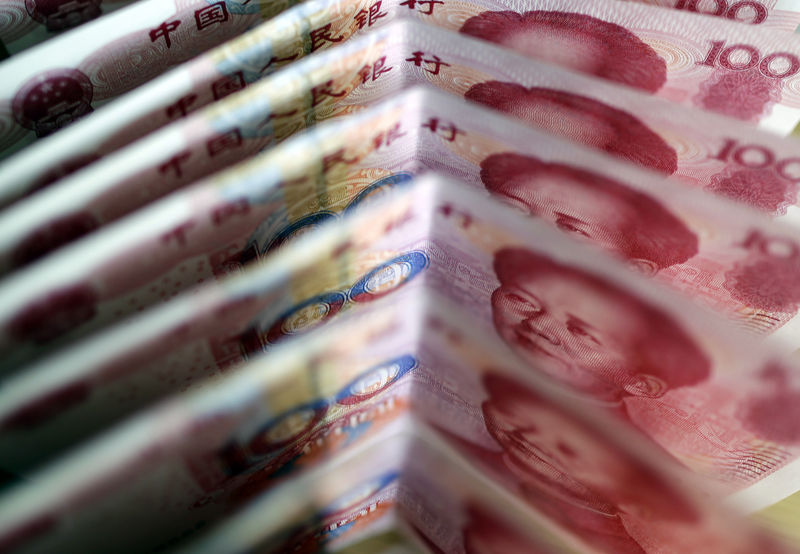* Yen up across the board in choppy trading, yuan slips
* Trumps threatens China with higher, more tariffs
* SCMP reports China's He will go to Washington on Thursday
* U.S. and Nikkei stock futures skid, Treasuries well bid
By Wayne Cole
SYDNEY, May 6 (Reuters) - The safe-haven yen climbed and the yuan slid on Monday after U.S. President Donald Trump threatened to raise tariffs on China, sending stocks and commodities into a tailspin.
Some losses were recouped when the South China Morning Post reported China Vice-Premier Liu He would travel to Washington on Thursday after a delay, rather than cancelling planned talks altogether. the SCMP later said no decision had been made on the trip and it might indeed be cancelled, leaving the market guessing.
In a surprise twist on Sunday, Trump announced he would hike U.S. tariffs on $200 billion worth of Chinese goods this week and target hundreds of billions more soon. Twitter message marked a major shift in tone from Trump, who has cited good progress in trade talks and praised his relationship with Chinese President Xi Jinping.
Nor was sentiment helped by news the United States was deploying a carrier strike group to the Middle East to deter any attack from Iran amid heightened tensions over sanctions. responded by bidding up the yen, which is considered a safe harbour in times of stress given Japan's status as the world's largest creditor and its huge hoard of assets abroad.
The dollar eased to 110.81 yen JPY= , having earlier touched a five-week trough at 110.335 on Reuters dealing. It had ended Friday around 111.12.
The market was again thin as Japan remains on holiday, though China was back from its break.
The euro hit its lowest since January around 123.33 yen EURJPY= before steadying to 123.96. The single currency was calm against the dollar at $1.1191 EUR= , while the dollar index was barely changed at 97.549 .DXY .
The dollar climbed 0.9 percent on the Chinese yuan to 6.7921 CNH= , while Shanghai blue chips .CSI300 lost 5.7 percent.
The Australian dollar took a spill given the country's exposure to Chinese trade and lost around 0.6 percent at one stage to $0.6960 AUD=D3 before steadying to $0.6986.
"An increase in tariffs would be bad news for risk assets and would threaten the prospect of a global growth recovery," said Rodrigo Catril, a senior FX strategist at NAB.
"An aggressive response from China that halts current negotiations, with higher tariffs by the end of the week would be a disaster for risk assets," he added.
ART OF THE DEAL?
As a taste of what was to come, E-Mini futures for the S&P 500 ESc1 slid 1.7 percent in and Treasury futures TYc1 jumped 18 ticks. Nikkei futures NKc1 were down 2.1 percent, though the cash market will not open until Tuesday.
The U.S. dollar had already softened on Friday when jobs data beat expectations but a soft reading for wages meant the Federal Reserve could afford to stay patient on policy. futures market on Monday moved to price in an even greater chance of a rate cut this year as Trump's tariff warnings were seen as a risk to the global economy and business sentiment.
Futures 0#FF: imply a funds rate around 2.220 percent by December compared with the current effective rate of 2.40 percent.
"Investors will be hoping that this step by the president is more of a negotiating tactic than a statement of intent," said Nick Twidale, chief operating officer at broker Rakuten.
"Any signs that a deal will be pushed further down the track or not progress at all could send markets into a tailspin."
